- News
- Reviews
- Bikes
- Accessories
- Accessories - misc
- Computer mounts
- Bags
- Bar ends
- Bike bags & cases
- Bottle cages
- Bottles
- Cameras
- Car racks
- Child seats
- Computers
- Glasses
- GPS units
- Helmets
- Lights - front
- Lights - rear
- Lights - sets
- Locks
- Mirrors
- Mudguards
- Racks
- Pumps & CO2 inflators
- Puncture kits
- Reflectives
- Smart watches
- Stands and racks
- Trailers
- Clothing
- Components
- Bar tape & grips
- Bottom brackets
- Brake & gear cables
- Brake & STI levers
- Brake pads & spares
- Brakes
- Cassettes & freewheels
- Chains
- Chainsets & chainrings
- Derailleurs - front
- Derailleurs - rear
- Forks
- Gear levers & shifters
- Groupsets
- Handlebars & extensions
- Headsets
- Hubs
- Inner tubes
- Pedals
- Quick releases & skewers
- Saddles
- Seatposts
- Stems
- Wheels
- Tyres
- Health, fitness and nutrition
- Tools and workshop
- Miscellaneous
- Cross country mountain bikes
- Tubeless valves
- Buyers Guides
- Features
- Forum
- Recommends
- Podcast
review
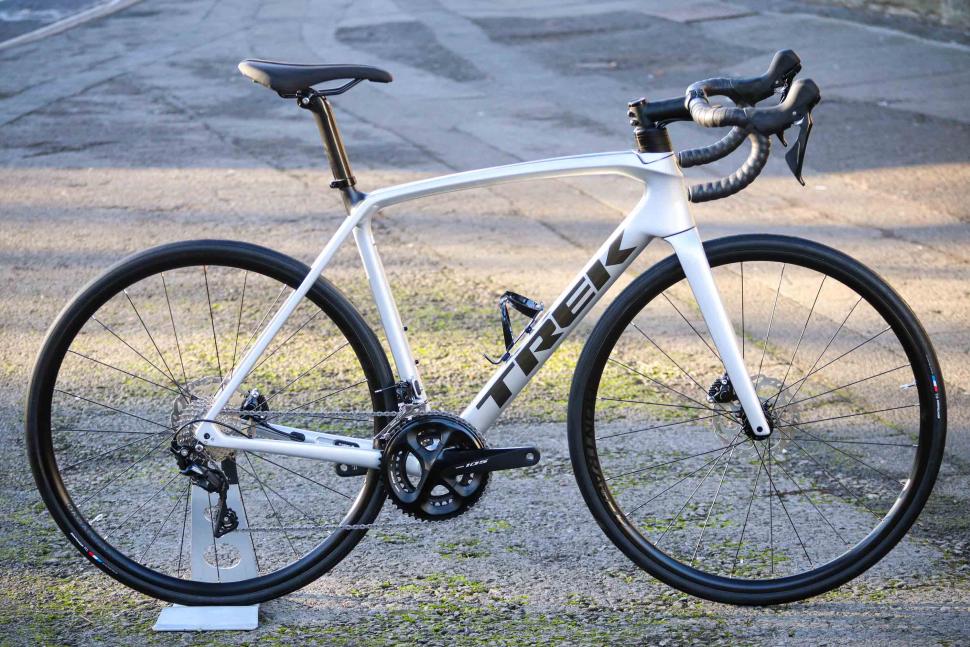 Trek Émonda SL 5 Disc
Trek Émonda SL 5 Disc£2,700.00
VERDICT:
The Émonda is a classic all-rounder, fun, fast and stiff, although this model isn't the lightest
Internal cable routing gives a very clean look
A great all-rounder
Good finishing kit
Not exactly light
Weight:
9,160g
Contact:
At road.cc every product is thoroughly tested for as long as it takes to get a proper insight into how well it works. Our reviewers are experienced cyclists that we trust to be objective. While we strive to ensure that opinions expressed are backed up by facts, reviews are by their nature an informed opinion, not a definitive verdict. We don't intentionally try to break anything (except locks) but we do try to look for weak points in any design. The overall score is not just an average of the other scores: it reflects both a product's function and value – with value determined by how a product compares with items of similar spec, quality, and price.
What the road.cc scores meanGood scores are more common than bad, because fortunately good products are more common than bad.
- Exceptional
- Excellent
- Very Good
- Good
- Quite good
- Average
- Not so good
- Poor
- Bad
- Appalling
Trek's Émonda SL 5 Disc is a solid all-round race bike offering great handling, a stiff platform for performance and a comfortable riding position, plus it's all wrapped up in a minimalistic, clean-looking package. This build isn't exactly lightweight though.
Trek launched this latest Émonda design last year, giving what has always been considered its lightweight climbing machine an aerodynamic makeover that takes it into what I consider quality all-rounder territory.
From a ride point of view, I can't fault it. It's firmer than a lot of carbon bikes on the market, and I kind of like that. Getting smashed about isn't fun, but neither is a bike that mutes all the signals from the road below. The Émonda balances this well.
> Buy Now: Trek Émonda SL 5 Disc from Trek
There is no harshness, though; it's well within the limits of comfort for a race bike, and that gives it its eagerness, its 'attitude' if you like. If you ride it hard, you get rewards.
It also helps that it looks the business too. The large tube junctions flow smoothly, while the chunky down tube gives a hint at just how stiff the Émonda is.
Stand hard on the pedals for a climb or sprint and the bike feels tight everywhere, although most notably around the bottom bracket area. There is no flex anywhere, and it just eggs you on to keep hammering away when your legs are screaming to ease up.
Chubby chaser
The only downside is that this SL 5 build's weight can just take the shine off. This 56cm model weighs in at 9.16kg, which is on the beefy side for a near three-grand bike.
The SL 6 Pro I rode last year came with an Ultegra mechanical groupset and 35mm deep Bontrager Aeolus Elite carbon wheels, and weighed 8.23kg. It felt much nippier than the SL 5 when it matters.
As an experiment I switched the SL 5's wheels for a pair of 1,400g Scribe Élan Wide+ 42-D wheels I had on test, and that unlocked the Émonda's potential. I'm not saying you should go out and blow £1,190 on newwheels, just that you shouldn't be put off by the standard weight of the SL 5. It can be tweaked without spending a fortune in the future.
On all but the steepest of climbs though, the Émonda doesn't feel as heavy as the road.cc scales would suggest. It still feels nippy as you accelerate out of corners or crest those short power climbs, and it always seems to have an eagerness to keep rolling.
Right angles
The geometry helps too. This is a proper race bike with a steepish 73.5° head angle for quick steering, plus a short 151mm head tube to allow a low front end and a short wheelbase. At just 983mm, this certainly gives it a nimble and flickable feeling in the bends.
On the downhills I found I could let the Émonda go even when the road surface was less than perfect. It just feels really planted, and coupled with that firm frame passing through loads of feedback from the tyres, I left me feeling perfectly in tune with it.
The steering is on the fun side of neutral, and allows you to just point the handlebar and aim for the apex. The Émonda is also very responsive to slight changes in body position if you need to tweak your line or get yourself out of trouble. I found this out when riding somewhere I had never ridden before – a descent which was easily 40mph+ in sections.
The Trek just nailed it, even though I didn't know what was around the next corner. With less caution than I probably should use, I could throw the Émonda through the bends while constantly making little tweaks to my position to line it up for the next one.
The SL 5 is also a quality mile muncher. The firm ride didn't seem to fatigue my joints any sooner than normal, and although the position is racy, it isn't extreme either. I could ride on the hoods for hours without discomfort and made good use of the shallow drops too.
Frame and fork
As I mentioned earlier, the Émonda focuses more on aerodynamics now than ever before, but that doesn't mean it has become a rocket ship on the road. The Émonda is a climbing bike after all, so Trek's engineers have honed in on 'unsteady aerodynamics,' which they say give larger effects at lower speeds when ascending, rather than on curves for cutting through at high speeds in straight lines.
For starters the front end has been made as smooth as possible, with all cables and hoses directed through the head tube into the frame and fork, giving a very clean look. The head, down and top tube junction is large and beautifully sculpted for airflow too. As a whole the Trek has been optimised for 25mm tyres, although it will swallow 28mm with 6mm of space around the tyre.
The integrated spacer is designed to line up perfectly with the frame when the handlebar is pointed straight ahead, although it does limit how far the bar will turn in each direction. It can feel a bit daunting at first – I kept worrying I might not have enough lock to negotiate a tight turn at low speed.
It proved an unfounded worry though, and the only time I reached the turning limit was when trackstanding at the lights.
The top-end Émonda SLRs use a carbon fibre all-in-one handlebar and stem to take things even further, but there isn't the budget for that here.
As for the seatpost, Trek has decided to do things a little differently. The seat tube extends high, up past the top tube by some way. An external seat mast slides over the top and clamps into position, and the seat tube inside the mast allows a bit of flex, which aids comfort.
The top tube flares out at the seat tube junction, which I find I often rub my thighs against. I got around it by running the saddle 5mm further forward, but it's worth bearing in mind if you have large legs.
The frame and fork are created using Trek's 500 Series OCLV carbon fibre. It's a bit heavier than the new 800 Series found on the more expensive SLR range, but still gives a reasonable claimed weight of 1,142g for the frame and 380g for the fork. There are a massive eight sizes available, too, ranging from 47cm up to 62cm.
The Émonda range is now disc brake only, which means you're getting 12mm thru-axles and flat mounts for the disc calipers.
Big bottom
Trek has gone down the T47 bottom bracket route. Standard threaded bottom brackets have the bearing cups sitting outside the frame, which limits the width the bottom bracket shell can be without pushing the Q-factor (the distance between the pedals) too wide.
To allow a wider shell, which in turn lets the down tube, seat tube and chainstays all have larger joins for increased stiffness at this crucial point, many brands use press-fit cups. These sit inside the frame, allowing a wider shell while keeping the Q-factor the same. In the past there have been creaking and wear issues due to slack tolerances between the cups and the frame, though, so some people have fallen out of love with them.
The T47 is kind of the best of both worlds, as the bearings sit inside the frame but they are threaded into place rather than pressed. That gives a better (and easier) fit, but still allows for that wide bottom bracket shell.
To finish everything off, the SL 5 is available in two colours: this Quicksilver/Brushed Chrome, or Carbon Blue Smoke/Metallic Blue, which I reckon looks even better.
Finishing kit
The SL 5 is adorned with a Shimano 105 R7000 11 speed groupset, which cannot really be faulted, either from my own experience of riding it for thousands of miles on test bikes, or from Dave's in-depth review from a couple of years ago.
The gear shifting is precise and works well even under load – especially at the chainset – and the feel at the lever is practically the same as Ultegra R8000.
Trek has paired a 50/34t chainset with an 11-30t cassette, which gives a decent spread of gears for a bike with racing intentions. Crank length is determined by frame size, ranging from 165mm to 175mm.
Alongside the flat mount 105 calipers the SL 5 uses 160mm SM-RT70 rotors front and rear.
Stopping power is great, as is the modulation and control.
If you weren't aware, Trek's in-house kit and component brand is Bontrager, so it's no surprise to find this adorning the Émonda throughout. The Comp VR-C Road is a shallow drop bar with a compact design, making it usable for most riders regardless of flexibility.
There is nothing flash about it, but it is comfortable, has a decent length of central section for computer mounts or lights, and its aluminium construction is stiff enough for out-of-the-saddle efforts.
> road.cc Road Bike of the Year 2020/21
The Bontrager Elite Stem is another component that just gets on with its job. On the 56cm frame you get a 110mm, and it comes with Trek's Blendr compatibility.
This means you get a selection of mounts for various accessories, such as lights and computers, to sit out in front of the stem. On Trek's website it's £59.99 (£30 more than the handlebar), so it's certainly not a budget component.
The saddle is called the Verse Comp and it's a good 'un, at least for me. It's got a swoopy shape I found gave me plenty of different position options (I like to slide back to climb, for instance). It's 270mm long and 145mm wide (155mm on the smaller frames) with steel rails and a central cut-out. It's also compatible with Blendr accessories.
The frame itself is compatible with DuoTrap S, which is a Blutooth/ANT+ sensor which can send all sorts of data and works with Garmin, Bontrager, PowerTap and more, though the sensor is sold separately.
Wheels and tyres
As with the rest of the finishing kit, the wheels are Bontrager. Using their sealed alloy hubs mated to Paradigm SL rims, they have an internal width of 21mm and 24 spokes front and rear. As I mentioned earlier, they are a bit weighty, but they rode well enough throughout the test period, and I had no durability or trueness issues. They are tubeless ready for a bit of futureproofing.
> road.cc's Best Cycling Wheels of the Year 2020/21
I'm a fan of Bontrager's tyres. I've ridden a few, and was impressed when I tested the R3 Hard-Case Lite a couple of years back. The SL 5 uses the entry-level R1 Hard-Case Lite, and it's pretty good. With a 60tpi (threads per inch) casing it isn't the most supple, but it doesn't detract too much from the ride quality.
They roll pretty well too, and grip is more than adequate in both the wet and dry. More importantly though, considering the review period took in the end of winter, they seem robust and suffered no punctures.
Still, as with the wheels the SL 5 deserves better in the long term. If you want to keep things in the Bontrager family, those R3s mentioned retail for £42.99 now, or £52.99 if you want to go tubeless.
Value
Bike prices are all over the place at the moment, and there have been some big jumps in Trek's line-up. That SL 6 Pro I reviewed was £3,350 in 2021, and it's now £3,900 with what looks to be the same build. The frameset has gone up from £2,200 to £2,700. Meanwhile this SL 5 has come through relatively unscathed at £2,750, up just £25 over last year's prices.
Around the time this Émonda was released, Specialized launched its new Tarmac SL 7 (I was lucky enough to review the S-Works model), and it's a similar sort of bike to the Trek. For 2022 Specialized has largely used SRAM components on its road bikes though, so there's no direct comparison with the SL 5.
However, the entry-level Tarmac SL 7 is the Comp model, which comes with a Rival eTap AXS electronic groupset and DT Swiss alloy shallow section wheels for £5,000, while Trek's SL 6 eTap comes with the same wireless groupset and the Bontrager 35mm deep carbon wheels for £4,300.
There is some tough opposition out there though, with Canyon's new Ultimate CF SL 7 Disc featuring a 105 groupset, a full aero carbon cockpit and a claimed weight of 8.2kg for just £2,149.
Giant's TCR Advanced Disc 2 doesn't quite have the aero attributes of the SL 5, but it is considered a very good lightweight all-round race bike. For £2,349 you are getting a 105 groupset, full carbon frameset and Giant's own alloy wheels.
> Buy Now: Trek Émonda SL 5 Disc from Trek
Conclusion
The Émonda SL 5 is a great bike to ride, and that's down to the top-notch frame and fork paired to good quality finishing kit. True, the wheels and tyres can take the shine off of the performance a touch, but that is true of many entry-point bikes. This is a bike that will tackle any kind of topography or race and excel at it. The frameset is great and it's ripe for upgrades over time too.
Verdict
The Émonda is a classic all-rounder, fun, fast and stiff, although this model isn't the lightest
road.cc test report
Make and model: Trek Émonda SL 5 Disc
Size tested: 56cm
About the bike
List the components used to build up the bike.
Wheels:
Hub front: Bontrager alloy, sealed bearing, CenterLock disc, 100x12 mm thru axle
Hub rear: Bontrager alloy, sealed bearing, CenterLock disc, Shimano 11-speed freehub, 142x12 mm thru axle
Rim: Bontrager Paradigm SL, Tubeless Ready, 24-hole, 21 mm width, Presta valve
Spokes: 14 g stainless steel
Tyre: Bontrager R1 Hard-Case Lite, wire bead, 60 tpi, 700x28 c
Max tyre size: 30c
Drivetrain
Shifter: Shimano 105 R7020, 11-speed
Front derailleur: Shimano 105 R7000, braze-on
Rear derailleur: Shimano 105 R7000, short cage, 30T max cog
Crank Size: Shimano 105 R7000, 50/34 (compact), 172.5 mm length
Bottom bracket: Praxis, T47 threaded, internal bearing
Cassette: Shimano 105 R7000, 11-30, 11-speed
Chain: Shimano 105 HG601, 11-speed
Max. chainring size: 1x: 50T, 2x: 53/39T
Components
Saddle: Bontrager P3 Verse Comp, steel rails, 145 mm width
Seatpost: Bontrager alloy seat mast cap, 10 mm offset, tall length
Handlebar: Bontrager Comp VR-C, alloy, 31.8 mm, 100 mm reach, 124 mm drop, 42 cm width
Handlebar tape: Bontrager Supertack Perf tape
Stem: Bontrager Elite, 31.8 mm, Blendr-compatible, 7-degree, 100 mm length
Brake: Shimano 105 hydraulic disc
Brake rotor: Shimano SM-RT70, CenterLock, 160 mm
Tell us what the bike is for and who it's aimed at. What do the manufacturers say about it? How does that compare to your own feelings about the bike?
Trek says, "Émonda SL 5 Disc is a lightweight carbon road bike with a balanced ride quality, superior handling characteristics and the added benefit of free speed thanks to aero tube shaping. It's a great choice for century rides on hilly terrain, windy flats and speedy descents."
I think the SL 5 is a classic all rounder.
Where does this model sit in the range? Tell us briefly about the cheaper options and the more expensive options
This SL 5 model kicks off the SL range, sitting just £25 above the price of the frameset. Going up through the models you find the SL 6 and SL 6 Pro (£3,400 and £3,900 respectively), the SL 6 eTap (£4,300) and the Ultegra mechanical SL 7 (£5,350). Finally you get to the 12-speed Ultegra Di2 SL 7 (£5,600) and the SL 7 eTap, which uses SRAM Force for £6,100.
Above the SL range is the SLR line up, and below you'll find the aluminium alloy range, the ALR.
Frame and fork
Overall rating for frame and fork
8/10
Tell us about the build quality and finish of the frame and fork?
A high quality frame and fork. It feels great to ride and the paint finish is high end.
Tell us about the materials used in the frame and fork?
Frame: Ultralight 500 Series OCLV Carbon, Ride Tuned performance tube optimisation, tapered head tube, internal routing, DuoTrap S-compatible, flat-mount disc, 142x12 mm thru axle
Fork: Émonda SL full carbon, tapered carbon steerer, internal brake routing, flat-mount disc, 12x100 mm thru axle
Tell us about the geometry of the frame and fork?
With its steepish angles and short wheelbase, this sits very much in the race bike camp.
How was the bike in terms of height and reach? How did it compare to other bikes of the same stated size?
This 56cm model features a stack of 563mm and a reach of 391mm, which is fairly typical for a bike of this size with racing intentions.
Riding the bike
Was the bike comfortable to ride? Tell us how you felt about the ride quality.
It has a firmer ride than a lot of carbon frames, but personally I like that. It feels like a purposeful and aggressive frame without ever feeling harsh and uncomfortable.
Did the bike feel stiff in the right places? Did any part of the bike feel too stiff or too flexible?
Plenty of stiffness throughout, most notably at the bottom bracket junction.
How did the bike transfer power? Did it feel efficient?
It does feel efficient, especially considering its weight.
Was there any toe-clip overlap with the front wheel? If so was it a problem?
No.
How would you describe the steering? Was it lively neutral or unresponsive? Responsive.
Tell us some more about the handling. How did the bike feel overall? Did it do particular things well or badly?
I found the handling quick with a degree of balance to it – it never feels twitchy.
Which components had the most effect (good or bad) on the bike's comfort? would you recommend any changes?
I liked the Bontrager saddle. I found it squidgy enough to absorb the bumps, without being so soft you find yourself bouncing around.
Which components had the most effect (good or bad) on the bike's stiffness? would you recommend any changes?
The stem and handlebar offer stiffness to match the frame, and there's no real sign of flex from the wheels either.
Which components had the most effect (good or bad) on the bike's efficiency? would you recommend any changes?
The wheels are a bit weighty, so if you can upgrade to something lighter you'll really unlock the performance of the Émonda.
Rate the bike for efficiency of power transfer:
8/10
Rate the bike for acceleration:
7/10
Rate the bike for sprinting:
8/10
Rate the bike for high speed stability:
8/10
Rate the bike for cruising speed stability:
8/10
Rate the bike for low speed stability:
8/10
Rate the bike for flat cornering:
8/10
Rate the bike for cornering on descents:
9/10
Rate the bike for climbing:
7/10
The drivetrain
Rate the drivetrain for performance:
9/10
Rate the drivetrain for durability:
8/10
Rate the drivetrain for weight:
8/10
Rate the drivetrain for value:
7/10
Tell us some more about the drivetrain. Anything you particularly did or didn't like? Any components which didn't work well together?
Performance-wise, 105 is probably all the groupset most of us will ever need from Shimano's catalogue. The shifting is great, as is braking power and modulation, and the value is good.
Wheels and tyres
Rate the wheels for performance:
7/10
Rate the wheels for durability:
8/10
Rate the wheels for weight:
7/10
Rate the wheels for comfort:
7/10
Rate the wheels for value:
6/10
Tell us some more about the wheels.Did they work well in the conditions you encountered? Would you change the wheels? If so what for?
The Bontrager wheels are decent enough. They blunt the SL 5's climbing and acceleration a touch due to their weight, but I can't fault their durability.
Rate the tyres for performance:
7/10
Rate the tyres for durability:
8/10
Rate the tyres for weight:
7/10
Rate the tyres for comfort:
7/10
Rate the tyres for value:
6/10
Tell us some more about the tyres. Did they work well in the conditions you encountered? Would you change the tyres? If so what for?
Bontrager tyres typically offer decent performance, and so it is with the R1s. Like the wheels though they are a touch heavy and not the most supple.
Controls
Rate the controls for performance:
8/10
Rate the controls for durability:
8/10
Rate the controls for weight:
7/10
Rate the controls for comfort:
8/10
Rate the controls for value:
7/10
Tell us some more about the controls. Any particularly good or bad components? How would the controls work for larger or smaller riders?
Good quality in-house kit. Upgrade if you want some bling, but there's no real need.
Your summary
Did you enjoy riding the bike? Yes
Would you consider buying the bike? Yes
Would you recommend the bike to a friend? Yes
How does the price compare to that of similar bikes in the market, including ones recently tested on road.cc?
This is well priced against a similar model in Specialized's Tarmac line-up, as mentioned in the review. There is tough opposition from the likes of Giant and Canyon, though.
Rate the bike overall for performance:
8/10
Rate the bike overall for value:
7/10
Use this box to explain your overall score
The Émonda SL 5 is a very likeable bike; it has a solid dependable feel while still maintaining plenty of fun factor. There is some tough opposition out there price-wise, but would I feel shortchanged by the Trek? No. It has a quality ride feel and a quality build, and I enjoyed every mile I covered on it.
About the tester
Age: 42
I usually ride: This month's test bike My best bike is: B'Twin Ultra CF draped in the latest bling test components
I've been riding for: Over 20 years I ride: Every day I would class myself as: Expert
I regularly do the following types of riding: time trialling, commuting, club rides, sportives, fixed/singlespeed,
Since writing his first bike review for road.cc back in early 2009 senior product reviewer Stu has tested more than a thousand pieces of kit, and hundreds of bikes.
With an HND in mechanical engineering and previous roles as a CNC programmer/machinist, draughtsman and development engineer (working in new product design) Stu understands what it takes to bring a product to market. A mix of that knowledge combined with his love of road and gravel cycling puts him in the ideal position to put the latest kit through its paces.
He first made the switch to road cycling in 1999, primarily for fitness, but it didn’t take long for his competitive side to take over which led to around ten years as a time triallist and some pretty decent results. These days though riding is more about escapism, keeping the weight off and just enjoying the fact that he gets to ride the latest technology as part of his day job.
































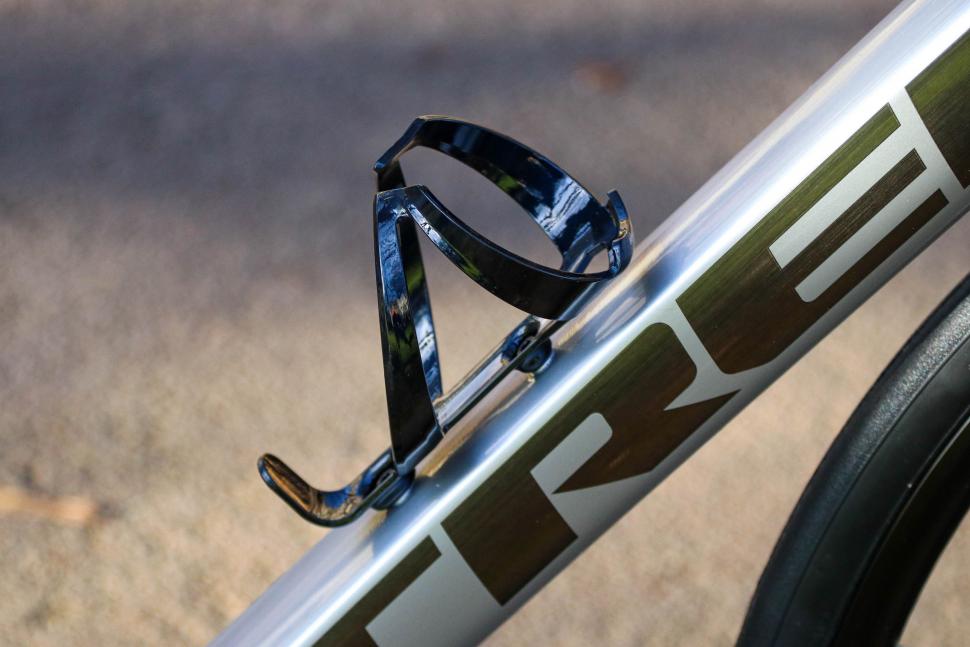

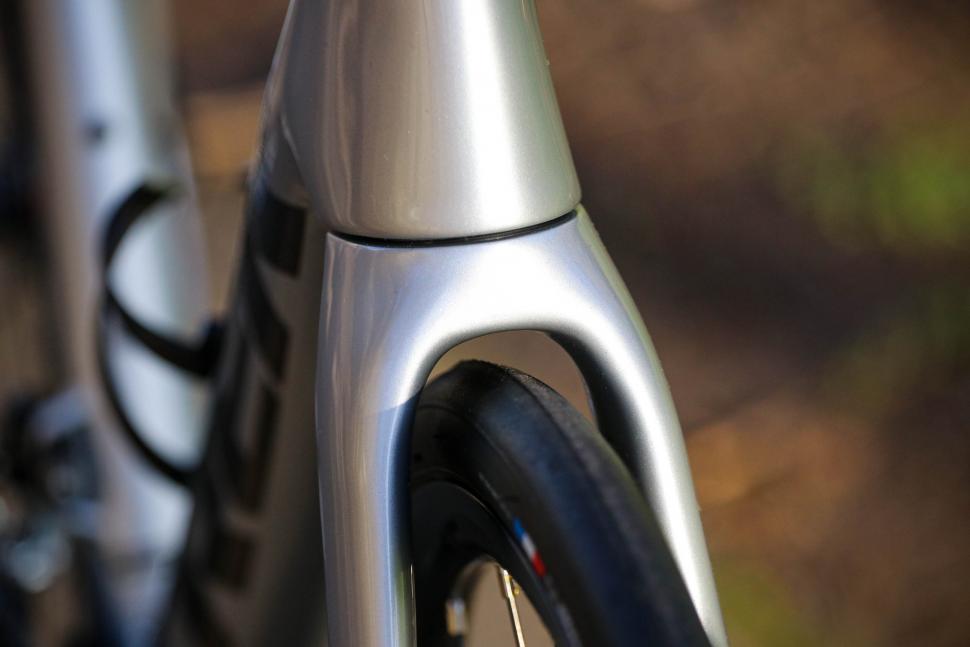

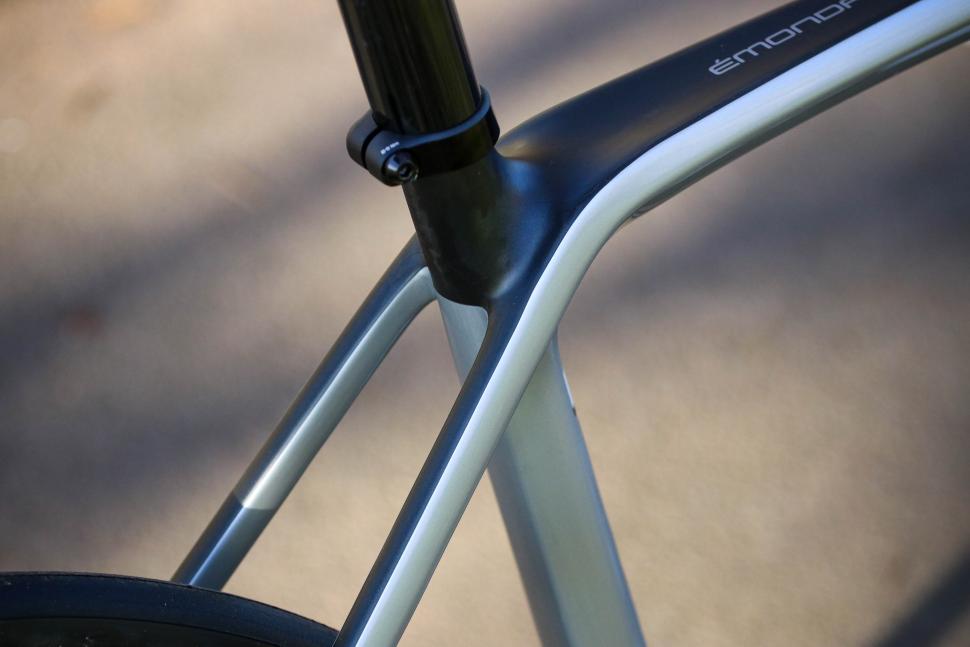
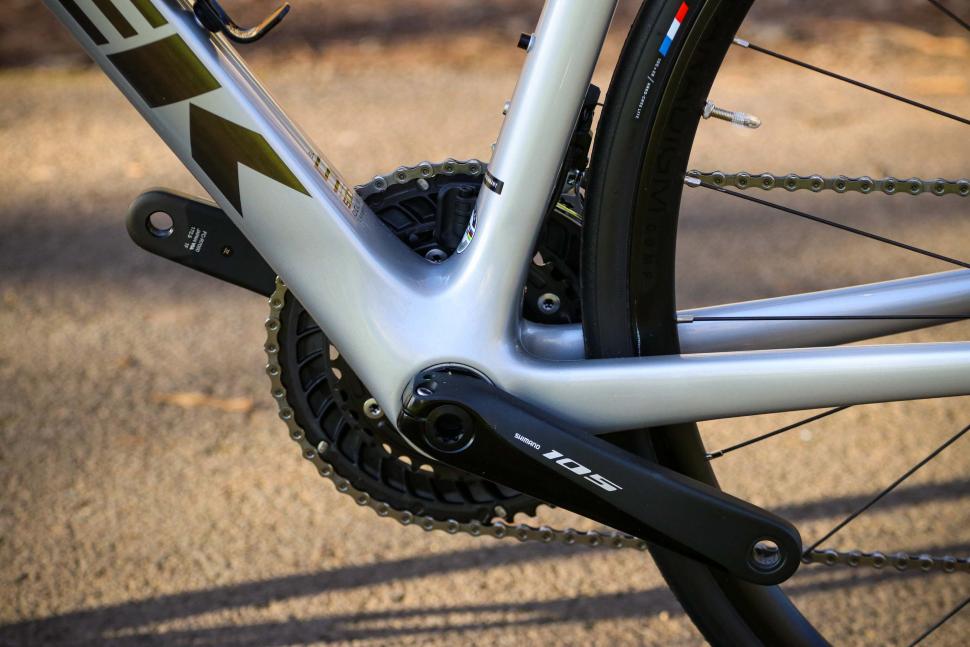

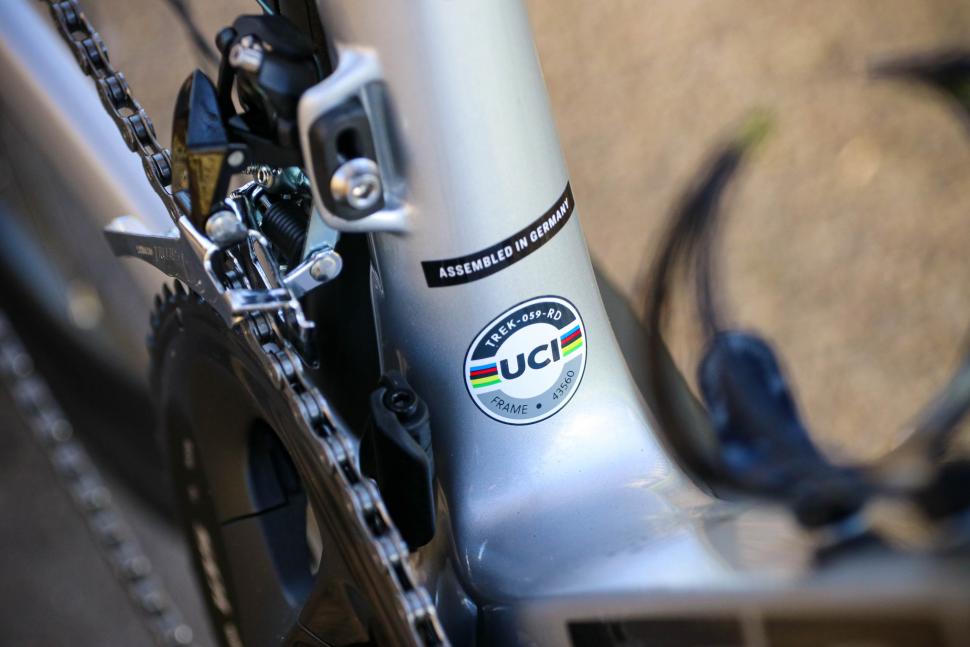
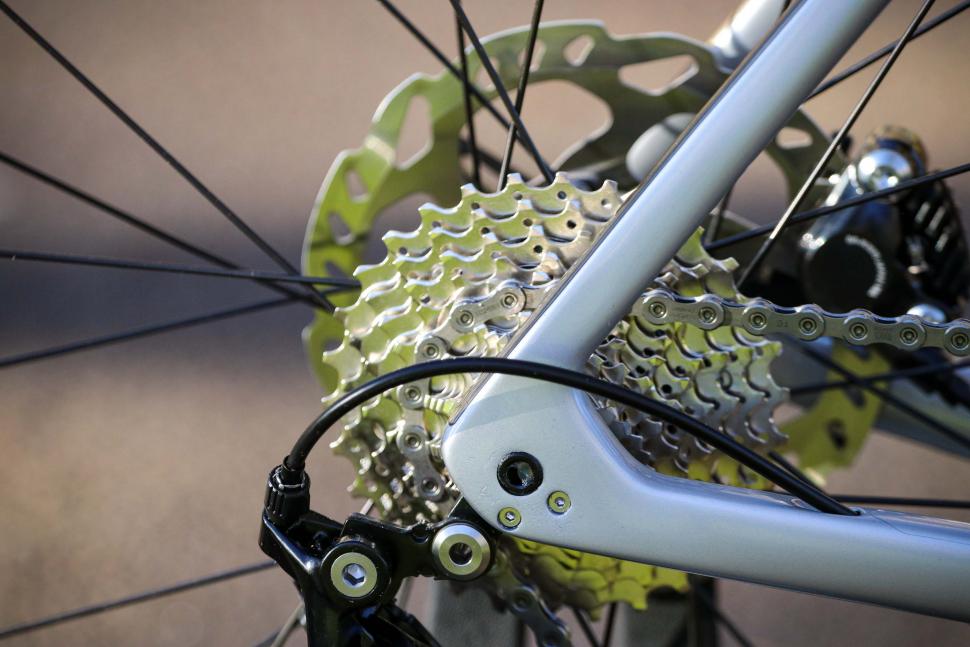
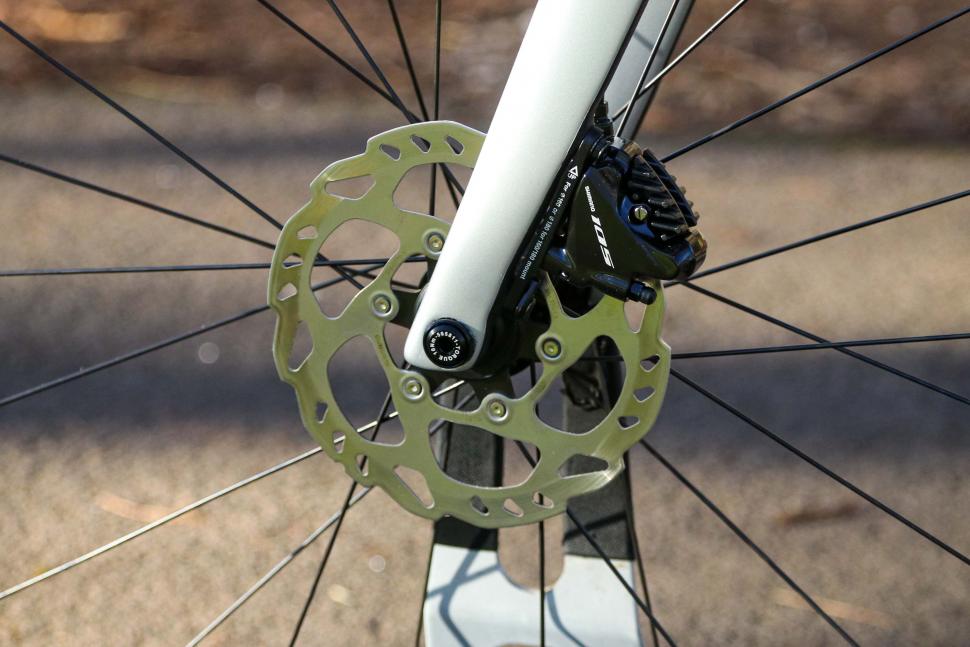

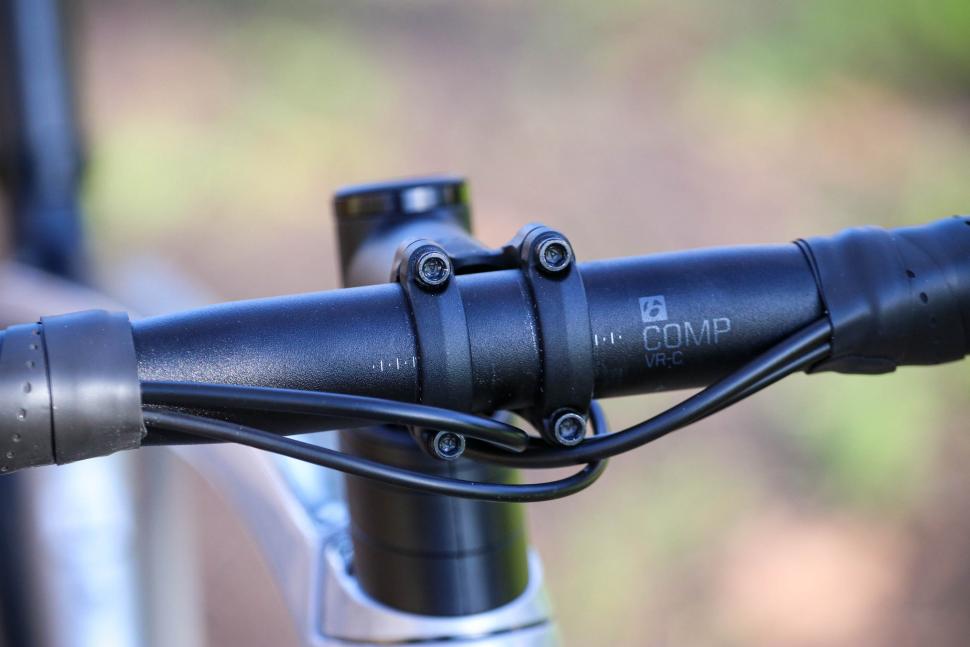





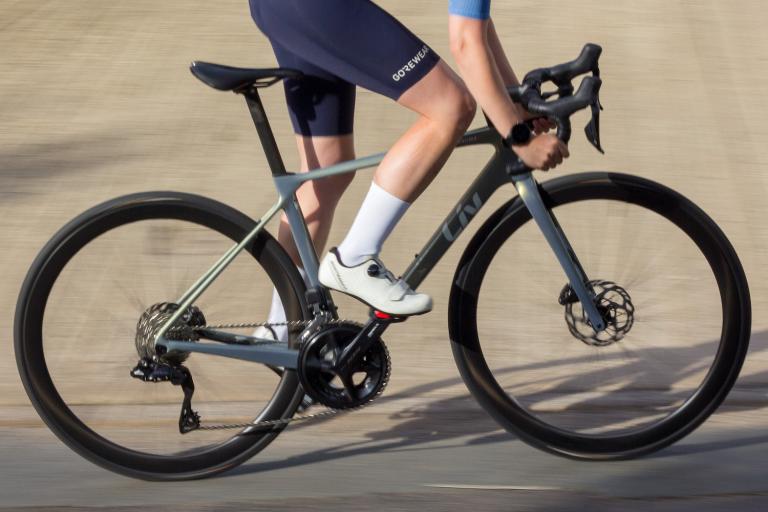
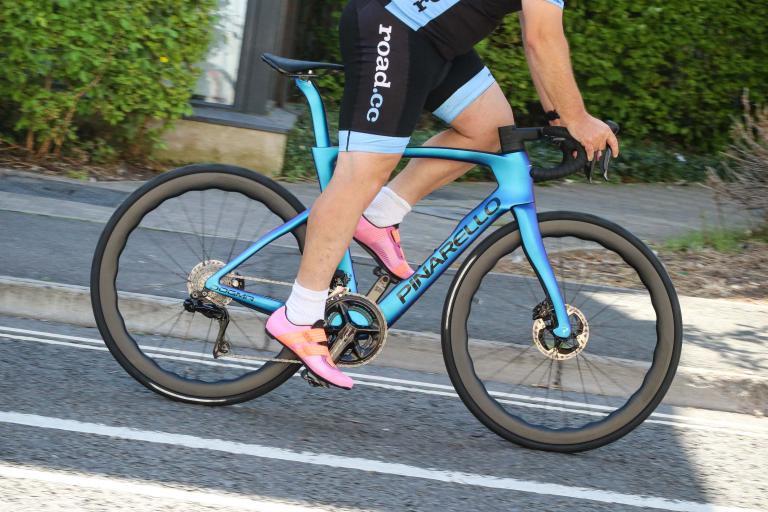
Another oddity is that in the opposite direction it appears to be a bus and bike lane. If the timings are tight, I can imagine that crossing being...
If recent corporate trends are anything to go by, they'll be putting up price rises for customers and laying-off staff soon. Because if N billion...
Because I like to keep people updated. I had a very helpful chat with CyclingUK today. Can't say too much, but I still firmly believe that they,...
Ordered !
Front page of the local rag, earlier in the week. How careless of the driver to let their car do that.
Hmm... sounds like the usual "over-reaction due to previous under-reaction". (Think Waverley station here has also banned these?)...
"Just a flesh wound" was expecting to be the. 94th person to post...
Same.
Is the end a regular circle? I.e would establishing the size of any circular object on a new chainring give you the same info on a worn one? Seems so.
I have the CatEye mounted on the seat stay. The CatEye angled mount means the light ends up pointing in right direction.